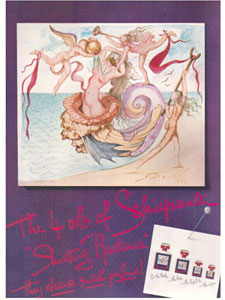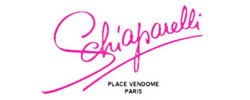Elsa Schiaparelli Perfume House History
Elsa Schiaparelli - The Art of Fashion and Fragrance
History of fashion and perfumes by Elsa Schiaparelli
A couturier must be an architect for design, a sculptor for shape, a painter for color, a musician for harmony, and a philosopher for temperament." Cristobal Balenciaga (1895-1972), Balenciaga Paris

Elsa Schiaparelli
Italian fashion designer, Elsa Schiaparelli (1890-1973), was one of the most influential creators of Parisian haute couture in the era between the two World Wars. She was a visionary and artist in the fashion industry, bringing a Shocking new style to the dull and drab knitwear age. She worked with Dada and Surrealist artists on her fashion, fragrance, and advertisement designs. Elsa's greatest rival, Gabrielle "Coco" Chanel, even referred to her as "that Italian artist who makes clothes."
In the late 1800s, romanticism was waning, and women's clothing designs became more wearable and free-flowing for movement (the walking suit), rather than drapes of heavy layers of clothing. Jersey and knitwear were at the peak of the fabric trend, due to the cost constraints placed on many in times of war and the need for women working and volunteering outside the home. Unfortunately, the knit material did not hold its shape well. Enter Schiaparelli or "Schiap" as her friends called her (House of Schiaparelli 1928-1954). She saw a need for better garment construction, and introduced fasteners such as zippers and buttons into clothing designs. Being the artist Elsa was, she incorporated these essential notions as statements of fashion, by dying zippers to match the fabrics and creating artistic buttons in shapes of bees and butterflies--anything but boring. Elsa introduced not only stylish notions, but also the use of flamboyant colors into the world of fashion including her trademark Shocking Pink (hot pink for us Americans). Schiaparelli helped woman's wear move from boring jersey, to whimsical wearable art.

Surrealism Influence of Elsa Schiaparelli Designs
Schiaparelli was influenced by Surrealism, and collaborated with notable artists in her fashion designs, fragrance bottles and advertisements. Perhaps her fascination with Surrealism came from Elsa's youth spent with her uncle Giovanni Schiaparelli, astronomer and science historian who discovered the canals on the planet Mars. Her Zodiac Winter 1938-39 collection was directly influenced by the stars, and kept in tune with the Surrealist movement in Paris at that time. Elsa's initial fashion success was her trompe l'oleil black wool sweater, with a knitted in white bowknot around the collar (November 1927). She wore the sweater to a fashion luncheon where a Lord and Taylor's buyer immediately ordered 40 copies, securing her fame in Surrealist fashions.


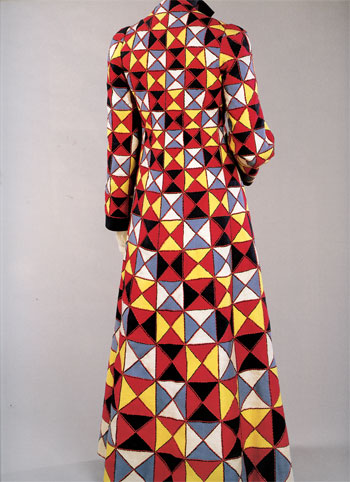
Fashion and Surrealism Artists
Some of her noteworthy fashion designs were created by collaboration and influence of Surrealist artists Man Ray, Salvador Dali, and Jean Cocteau. Elsa's Patchwork evening jacket from her Winter 1939-40 collection, was based on the popular Harlequin pattern used by Picasso and Man Ray. Working with Dali, Schiaparelli created the Tears Dress (Circus Collection, 1938) with trompe l'oeil rips and tears styling, the Shoe Hat (Winter 1937-38) made of black felt, the Skeleton Dress (1938) made of black silk crepe with plastic zips, and the famous Lobster Dress (Summer/Fall 1937) made of white and red silk organza. Working with Jean Cocteau, Elsa created the juxtaposition Two Profiles evening jacket out of a silk jersey material in 1937. The optical illusion of the design of the two face profiles reveals a vase of roses in the negative space on the backside of the jacket's design. Collaborating again with Cocteau, Elsa created a jacket with a female face profile embroidered with blond curly hair cascading down the length of one sleeve (1937). The House of Lesage embroidered both Schiaparelli and Cocteau designs.


(Summer/Fall 1937)

(Circus 1938)
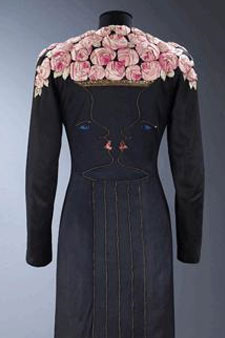
(1937)
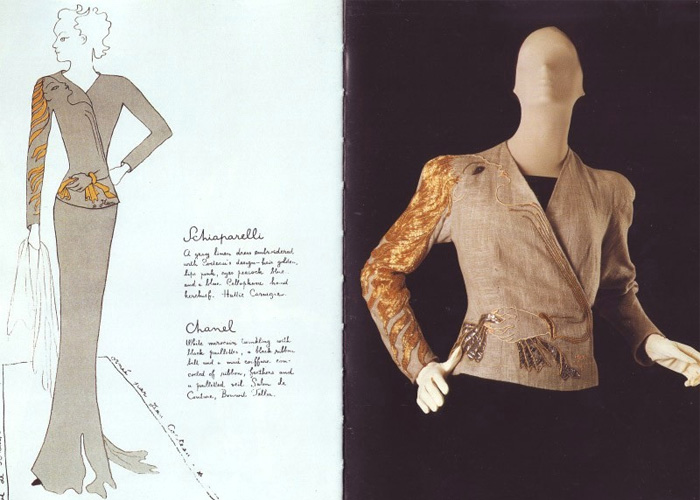
Fragrance and Surrealism Artists
Surrealist artist Leonor Fini designed Schiaparelli's famous fragrance bottle, Shocking, in the shape of a woman's torso. The bottle was modeled after the tailor dummy of actress Mae West, whom Elsa clothed. Advertisements for Shocking perfume were illustrated by artist Marcel Vertes. Vertes and Schiaparelli worked together on the set of the 1952 film, Moulin Rouge, where Elsa designed Zsa Zsa Gabor's outfits and Marcel worked as a costume and set designer. Dali also lent his art to advertisements for Shocking perfume, as well as designing the bottle for Le Roi Soleil (1946) fragrance by Schiaparelli. The "Ray of Sun" bottle was to celebrate the end of the war. French illustrator, Raymond Peynet, used his "Lovers" to advertise Schiaparelli's Succes Fou fragrance in the Valentine's packaging used in 1954.


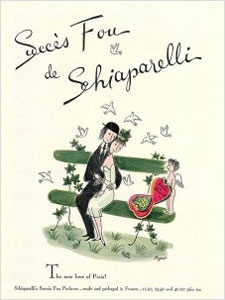
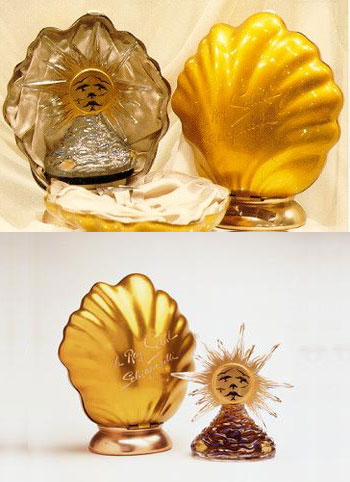

Summary

Schiaparelli's circle of influence included Surrealist artists she worked with in her designs, during movie costume designing, and also in her advertisement creations. Other artist influence and illustration of the fashionable and shocking world of Elsa Schiaparelli's haute couture included: Christian Berand, Marcel Duchamp, Francis Picabia, Alberto Giacometti, Meret Oppenheim, and Alfred Steiglitz.
Elsa Schiaparelli's fashion innovations continue to influence today's fashion world. Her artistic and whimsical designs have left their stamp on fashion history. Unfortunately the House of Schiaparelli closed in December 1954. When Elsa returned to Paris in 1945, from her refuge in America during World War II, Christian Dior's "New Look" of a younger romantic style had taken hold in women's design. The softer look included everything Schiaparelli designs had rejected when the fashion house emerged on the scene decades prior. Although her couture business ended, Elsa continued to travel, entertain, and attend fashion events until she passed away in 1973 at the age of 83. The Parisian haute couture artist Elsa Schiaparelli is one of the most remarkably Shocking fashion designers of her time.
Art of Fashion, Fragrance, and Ads for the House of Schiaparelli
The photo collections are for educational purposes, and copyrighted by their respective owners.

Elsa Schiaparelli photographed by Man Ray (1934)
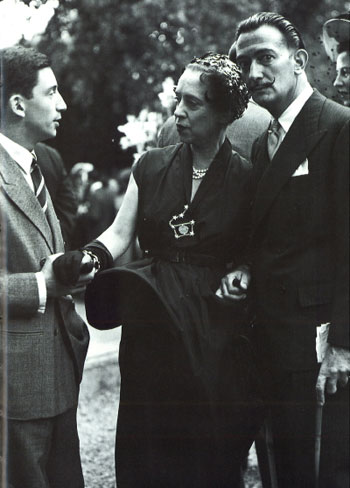
Elsa Schiaparelli with Salvador Dali (1949)

Elsa Schiaparelli design illustrated by Jean Cocteau
(Harper's Bazaar, 1937)
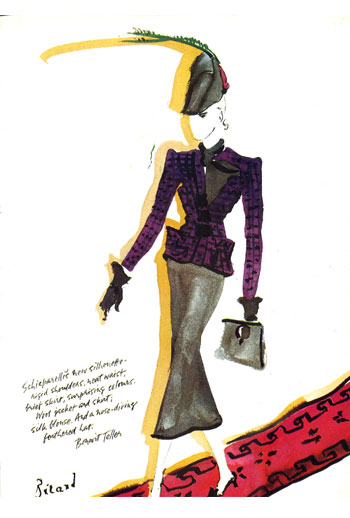
Schiaparelli design illustrated by Christian Bérard
(Vogue, 1935)
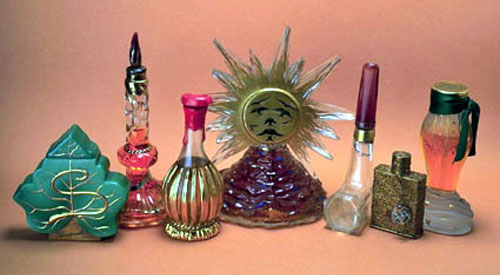
Elsa Schiaparelli Perfume Bottle Collection
Left to right: Succes Fou, Sleeping, Si, Le Roy Soleil, Snuff, Shocking (collector bottle), Zut.
Learn more about Elsa Schiaparelli perfumes.
By The Perfume Girl (Originally published on Oct 2011 at Fine Art Registry)
Resources:
- Photo credits: Wikipedia, Flickr, Google Images
- Philadelphia Museum of Art. "Shocking! The Art and Fashio of Elsa Schiaparelli." www.philamuseum.org
View all Elsa Schiaparelli perfumes and fragrances


